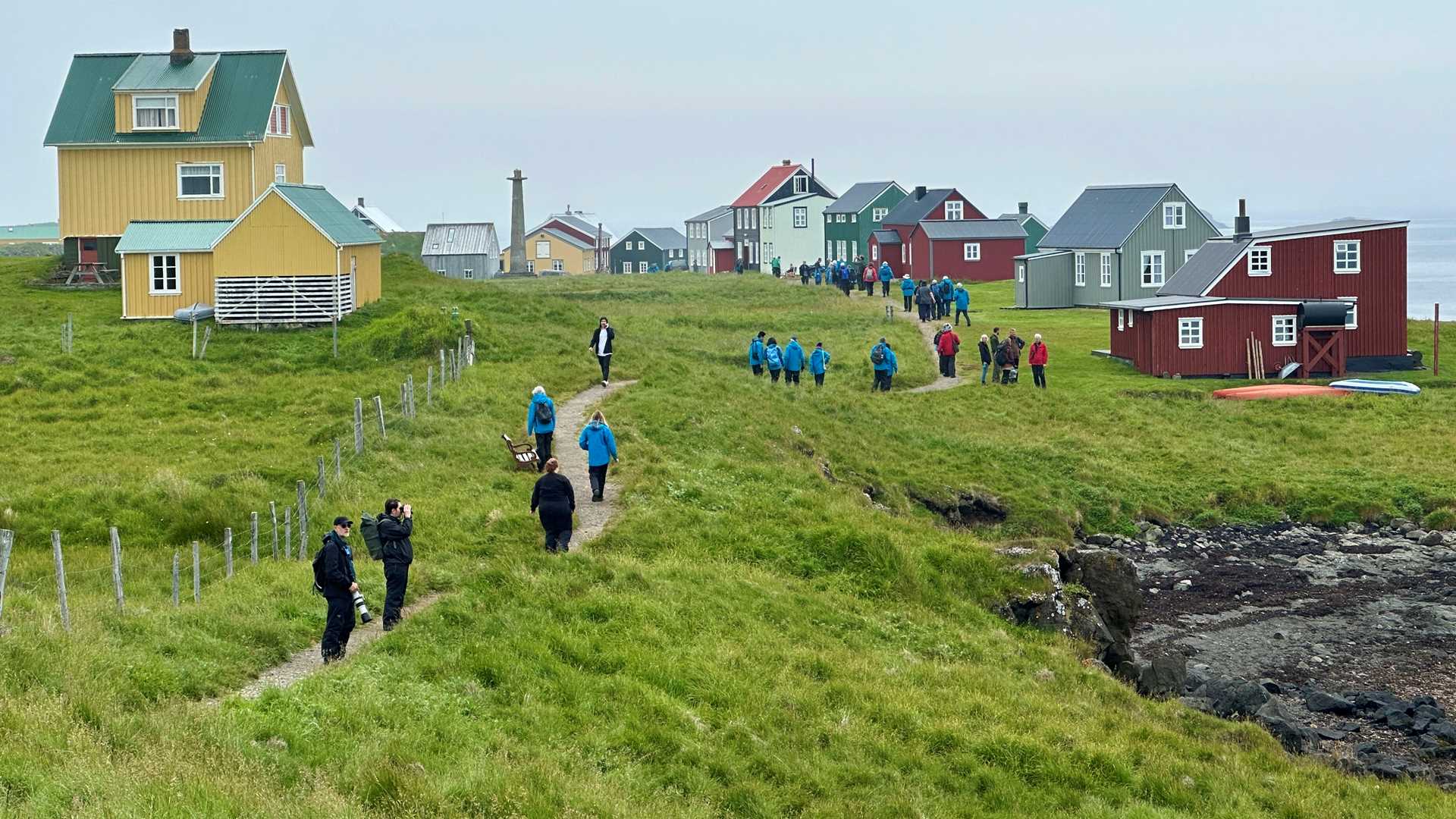The first morning of our circumnavigation of Iceland on National Geographic Explorer was calm and foggy. We gathered in the lounge for introductions to National Geographic photographer Susan Seubert, the field staff, and our Grosvenor teacher fellows. After a little free time, a thorough Zodiac briefing was followed by a photography presentation from certified photography instructor Alex.
After a delicious lunch, a musical performance by Daniel and Gunnar delighted everyone before we embarked on Zodiacs for our first wet landing on the island of Flatey. The flat nature of the island gives it its name and makes it a great place to graze sheep. Birds occupy the cliff edges, and a variety of species make nice homes/burrows/scrapes to raise their young.
After dinner, we made a pass by the Latrabjarg bird cliffs. The cliffs were formed by volcanic action and accumulation over an extensive period. Pancake layering makes it a great spot for birds to nest near ocean food sources; additionally, the area is difficult for land predators to access. Ships must stay a mile offshore to protect the birds, but we spotted them floating along and flying back to their nests.







